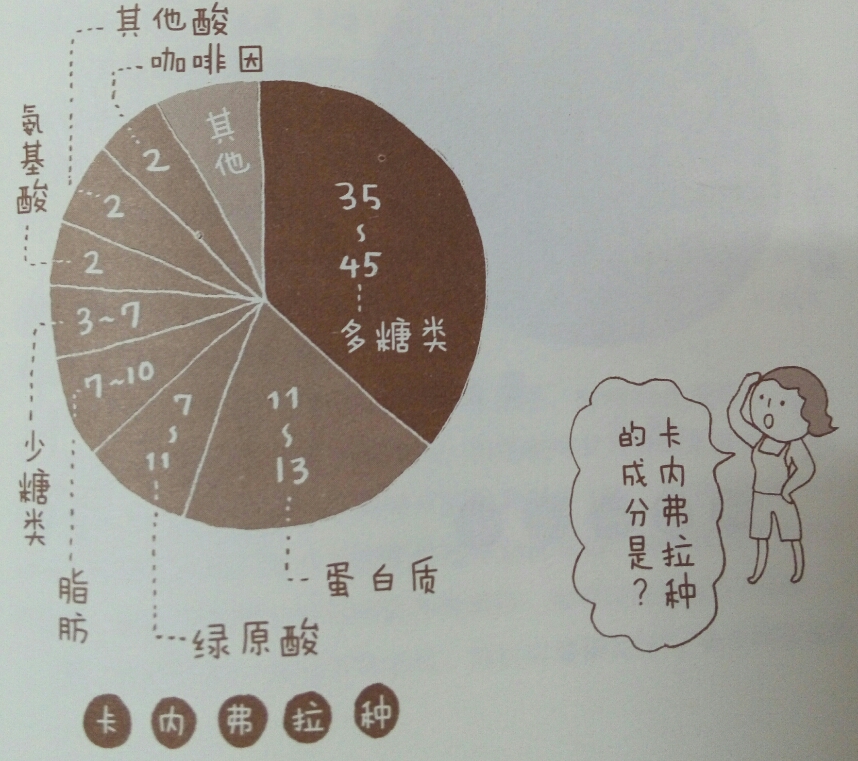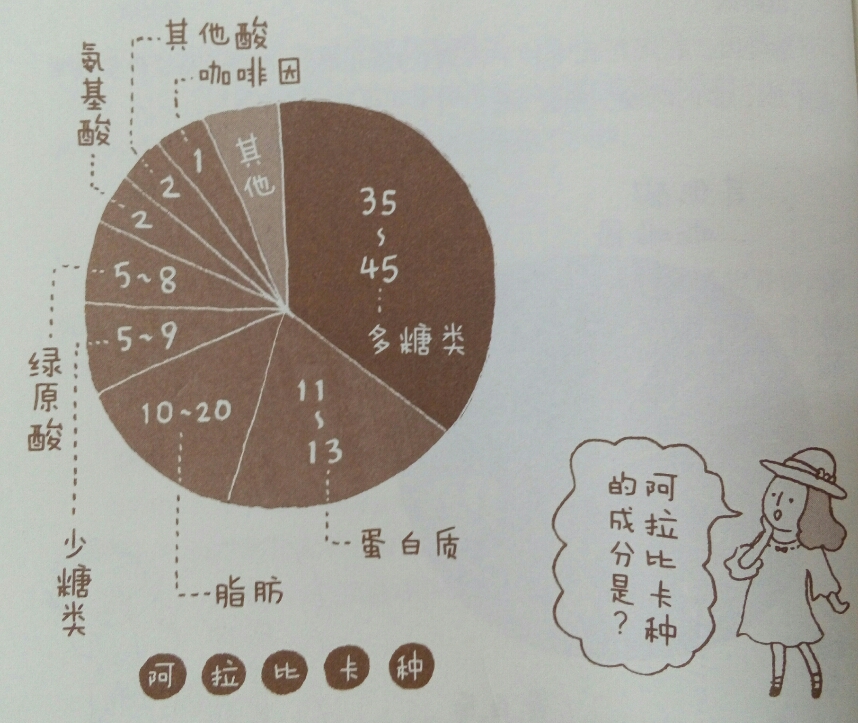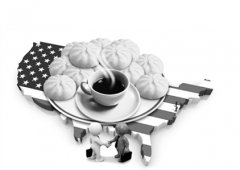Figure out what ingredients raw coffee beans are made of.


In raw coffee beans, moisture accounts for 9% to 13%, and moisture has little effect on the aroma of coffee beans. Later, I will introduce the content of various ingredients (calculated according to the state of dried raw beans). When the share of these ingredients changes, the flavor of coffee beans will also change greatly.
Polysaccharides
The most abundant ingredient in raw beans is polysaccharides, accounting for 35% and 45%. Although it is called sugar, it is not sweet at all. Polysaccharides here refer to the fibers that make up the bones of plants. The polysaccharides content of Arabica species is very different from that of Canefa species.
Protein
The content of protein is 12%. Proteins and polysaccharides are important components of plant bones. In this regard, the content of Arabica species is also very different from that of Canefa species.
Fat
Raw coffee beans contain fat, and the fat in coffee beans is composed of linoleic acid, palmitic acid and so on. In terms of fat content, Arabica has a higher fat content, accounting for 20%, while Canefa accounts for up to 10%.
Sugars (sucrose)
The content of sucrose (in this case, granulated sugar) is 10% for Arabica species and 3% or 7% for Canefa species.
Chlorogenic acid
The content of chlorogenic acids, Arabica species accounted for 5%-8%, Canefra species accounted for 7%-11%. There are many kinds of chlorogenic acid, and some kinds of chlorogenic acid are found only in Canefa species.
Acids (other than chlorogenic acid)
In addition to chlorogenic acid, there are citric acid, malic acid, quinic acid, phosphoric acid and so on, which account for only 2%.
Caffeine
Caffeine accounts for 0.9% ~ 1.4% of Arabica species; it usually accounts for 2% of Arabica species, and more than 3% of Arabica species.
Amino acid
The content of amino acids is 1%-2%. The amino acids in coffee beans include aspartic acid, glutamic acid and so on. The proportion of various amino acids in Arabica and Robeska species
It's different. The content of these amino acids, sugars and chlorogenic acid also affects the coloring and flavor of Arabica and Robeska during baking.
The content of these ingredients will also vary according to the origin, cultivation environment (altitude, precipitation, air temperature, fertilizer application) and selected methods. The different flavors we feel when we drink coffee are due to the different ratios of these ingredients.
Important Notice :
前街咖啡 FrontStreet Coffee has moved to new addredd:
FrontStreet Coffee Address: 315,Donghua East Road,GuangZhou
Tel:020 38364473
- Prev

What do you think of the newest mix of steamed buns with coffee?
Tianjin GouBuLi Group, a Chinese time-honored brand with a history of more than 150 years, has announced that it has successfully won the permanent right to use Colorado, Australia's largest coffee chain, in China. This means that GouBuLi, the representative of traditional Chinese food and beverage, has officially entered the field of coffee chain. Everyone is a little excited about the mix of steamed stuffed bun with a sip of coffee, and when they are confused.
- Next

Anatomy of coffee beans A cross section of the interior of coffee beans
Coffee bean internal cross section view just ripe coffee fruit on the tree ripe coffee fruit after the peel cut coffee fruit after the peel removed coffee fruit, inside two coffee beans with endocarp, silver skin coffee fruit internal structure (coffee fruit includes exocarp, mesocarp, pectin layer, endocarp, coffee bean silver skin, endosperm, embryo) Coffee Bean Internal Structure Details
Related
- Guji coffee producing area of Guji, Ethiopia: Humbela, Shakiso, Wulaga
- What is the most expensive variety of Qiloso in BOP multi-variety group?
- How to store the coffee beans bought home?
- Why are Yemeni coffee beans so rare now?
- Ethiopian Sidamo all Red Fruit Sun Sun Santa Vini Coffee beans
- SOE is mostly sour? What does it mean? Is it a single bean? what's the difference between it and Italian blending?
- Is Italian coffee beans suitable for making hand-brewed coffee?
- How to choose coffee beans when making cold coffee? What kind of coffee beans are suitable for making cold coffee?
- Just entered the pit to make coffee, what kind of coffee beans should be chosen?
- Can only Japan buy real Blue Mountain Coffee? What are authentic Jamaican Blue Mountain coffee beans?

